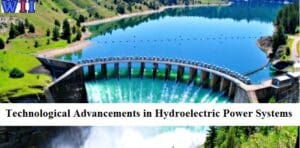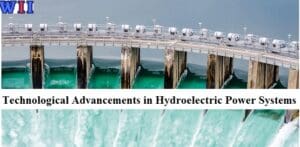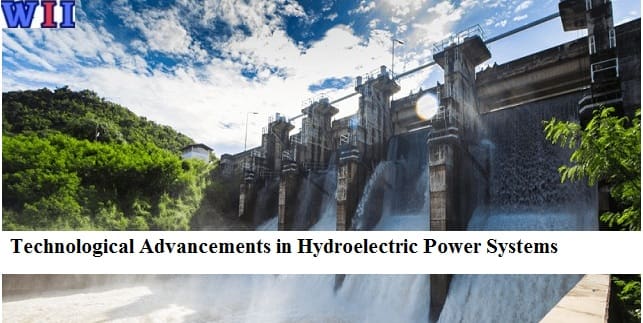Hydroelectric Power Systems: Introduction Hydroelectric power systems harness the energy of flowing or falling water to generate electricity, offering a clean and renewable energy source. The continuous development of technological advancements in this field plays a pivotal role in optimizing power generation, improving efficiency, and reducing environmental impacts.
Evolution of Hydroelectric Power Systems
The history of hydroelectric power generation dates back to ancient times when waterwheels were used for mechanical tasks. Over the centuries, advancements in engineering and technology paved the way for the modern hydroelectric power systems we see today. However, early systems faced limitations and challenges such as low efficiency and environmental impacts.
Modernizing Turbine Technology
One of the key areas of innovation in hydroelectric power systems is turbine technology. Newer turbine designs, such as Kaplan, Francis, and Pelton turbines, have significantly improved efficiency and power output. These advanced designs optimize the conversion of water energy into mechanical energy, resulting in increased electricity generation capacity.
Enhancing Dam Construction
Innovations in dam construction techniques have revolutionized the efficiency and safety of hydroelectric power systems. New materials and designs have led to the construction of larger and more durable dams. Innovative features like fish ladders and sediment management systems help mitigate the environmental impacts of dams. Successful dam projects like the Three Gorges Dam in China demonstrate the effectiveness of these advancements.
Improved Water Management Systems
Efficient water management is crucial for maximizing the potential of hydroelectric power systems. Advanced water management systems integrate real-time monitoring and control, optimizing water flow and turbine operation. These systems ensure a reliable and consistent power output while minimizing water wastage and environmental disruptions.
Remote Sensing and GIS Applications
Remote sensing technology and Geographic Information System (GIS) applications are invaluable tools in the planning and assessment of hydroelectric power systems. Remote sensing allows for accurate site selection by analyzing topography, vegetation, and other factors. GIS enables efficient monitoring of environmental impacts and facilitates informed decision-making throughout the project lifecycle.

Automation and Control Systems
Automation and control systems have transformed the operation and management of hydroelectric power plants. Advanced control algorithms optimize power generation by adjusting turbine operation based on real-time data. Automation streamlines processes, improves safety, and enhances overall efficiency, reducing maintenance costs and downtime.
Advancements in Energy Storage
Solutions Energy storage technologies have gained importance in hydroelectric power systems for grid stability and balancing. Pumped storage hydroelectricity, for instance, stores excess electricity by pumping water to a higher reservoir and releases it during peak demand periods. Emerging technologies like advanced batteries and compressed air energy storage offer additional solutions for efficient energy storage.
Grid Integration and Smart Grid
Technologies Grid integration is a critical aspect of harnessing the full potential of hydroelectric power systems. By connecting hydroelectric plants to the grid, electricity generated can be distributed and utilized effectively. Smart grid technologies enable efficient power transmission, load management, and integration of other renewable energy sources, further enhancing the reliability and sustainability of the power system.
Environmental Considerations and Mitigation
Hydroelectric power systems have environmental impacts, including changes in water flow, habitat disruption, and greenhouse gas emissions from reservoirs. Technological advancements have focused on mitigating these impacts. Measures such as fish-friendly turbine designs, sediment management systems, and habitat restoration projects have shown success in reducing the ecological footprint of hydroelectric power systems.
Hydroelectric Power in Remote Areas
Hydroelectric power plays a vital role in providing electricity to remote and off-grid areas. Innovative solutions, such as micro-hydro systems and run-of-river projects, offer decentralized power generation options. These systems empower rural communities, enhance socio-economic development, and improve quality of life through access to clean and reliable electricity.
Future Prospects and Emerging Technologies
The future of hydroelectric power systems looks promising with ongoing research and development in emerging technologies. Advanced materials, such as carbon composites and nanostructured coatings, offer improved efficiency and durability. Innovative design concepts, including underwater turbines and tidal energy systems, present new opportunities for harnessing water resources.
Case Studies: Technological Advancements in Action
Examining real-world examples of hydroelectric power projects showcases the successful implementation of technological advancements. Projects like the Itaipu Dam in Brazil and Paraguay demonstrate the impact of efficient turbine design and dam construction techniques. These case studies provide valuable insights and lessons for future projects.
Economic Considerations and Cost Optimization
An analysis of economic factors is crucial for the viability and scalability of hydroelectric power systems. Technological advancements aim to optimize costs through efficient turbine designs, improved materials, and streamlined construction techniques. Cost optimization strategies, such as life cycle assessments and project financing options, help ensure the long-term economic sustainability of hydroelectric power projects.
Government Policies and Incentives
Supportive government policies and incentives play a significant role in driving the growth of hydroelectric power systems. Governments worldwide provide regulatory frameworks, financial incentives, and subsidies to encourage investment in renewable energy, including hydroelectric power. Case studies of countries with successful policy frameworks, such as Norway and Brazil, highlight the importance of policy support in the development of the sector.

Collaboration and International Cooperation
Collaboration and international cooperation among governments, organizations, and industry stakeholders are vital for advancing hydroelectric power systems. Knowledge sharing, technology transfer, and joint research initiatives foster innovation and accelerate the adoption of technological advancements globally. International partnerships, like the International Hydropower Association, facilitate collective efforts toward sustainable hydroelectric power development.
Challenges and Future Outlook
Despite significant advancements, challenges remain in the hydroelectric power sector. Environmental concerns, such as fish migration and sedimentation, need continuous mitigation efforts. Social impacts, including resettlement and land use conflicts, require careful consideration and community engagement. Looking ahead, addressing these challenges while embracing emerging technologies and sustainable practices will shape the future of hydroelectric power systems.
Conclusion of Hydroelectric Power Systems
Technological advancements are driving the evolution of hydroelectric power systems, enabling higher efficiency, improved environmental performance, and enhanced socio-economic benefits. Continued innovation, collaboration, and policy support are essential for further growth and the realization of hydroelectric power’s potential as a clean and sustainable energy solution.
FAQs
Q1 How does hydroelectric power work?
Ans: Hydroelectric power works by utilizing the force of flowing or falling water to spin turbines, which in turn generates electricity.
Q2 What are the main advantages of hydroelectric power?
Ans: The main advantages of hydroelectric power include its renewable nature, minimal greenhouse gas emissions, and ability to provide reliable and consistent electricity.
Q3 Are there any environmental concerns associated with hydroelectric power?
Ans: While hydroelectric power is considered a clean energy source, there are some environmental concerns such as the alteration of natural river ecosystems and potential impacts on fish migration.
Q4 Can hydroelectric power be used in remote areas?
Ans: Yes, hydroelectric power is a viable solution for remote areas where grid connectivity may be limited. Micro-hydro systems and run-of-river projects offer decentralized power generation options.
Q5 What is the future outlook for hydroelectric power systems?
Ans: The future of hydroelectric power systems looks promising, with ongoing advancements in technology, emerging designs, and a growing emphasis on sustainability to maximize their potential and address environmental challenges.
Our Reader’s Queries
How does a hydroelectric system work?
Hydropower plants use a penstock to channel water, which then turns blades in a turbine to generate electricity. The turbine is connected to a generator that produces the electricity. There are different types of hydroelectric facilities, including run-of-the-river systems that use the force of the river’s current to apply pressure on the turbine.
What are the systems of hydropower?
The go-to hydroelectric power plant is the impoundment facility. This type of facility, usually a massive hydropower system, employs a dam to hold river water in a reservoir. The water is then released from the reservoir and flows through a turbine, causing it to spin. This spinning motion activates a generator that produces electricity.
What are 3 disadvantages of hydropower?
Hydroelectric energy has its downsides, with the most significant being its environmental impact. The construction of hydroelectric power plants can have adverse effects on the environment. Additionally, it can displace people from their homes and communities. The cost of building and maintaining hydroelectric power plants is also a concern. Limited reservoirs and droughts can also limit the availability of hydroelectric energy. Finally, safety concerns can arise due to the potential for dam failures and other accidents.
Can hydroelectric power be used in homes?
The majority of hydropower systems utilized by homeowners, small business owners, farmers, and ranchers are considered microhydropower systems. A 10-kilowatt microhydropower system is typically sufficient to power a large home, small resort, or hobby farm.

